SaaS Pricing Page Strategies – The Essential Guide
It doesn’t matter how many years of product management you’ve got under your belt, when it comes to defining pricing strategies for your product, you’ll always face unsolvable dilemmas.
I’m sure that you’ve come across some of the dilemmas mentioned below:
- My product is awesome. Should I charge more than my competitors for it?
- My product is Great. Should I charge less than my competitors for it?
- My product is Wonderful. Should I blow my competitors out of the water by giving it away for free (and pray I’ll be able to monetize it somehow later)?
I’m sure that you see a common thread here – since you’re not working in a vacuum, you have to consider the competition, or should you? Sure, competitors, especially those who’ve been there before you, are a force to be reckoned with and should influence pricing.
But, if you think that following your competitor’s price is a good pricing strategy, you’re going to hit a brick wall sooner than you think. As we all know, even if products are close in terms of features, they’re never the same in terms of quality, investment, design, costs, research, and all the other pretty lies we tell ourselves to create some distance between us and the competition.
Don’t get me wrong; I think that surveying competitor prices and strategies is a great way to conduct that initial benchmark, but that’s where it should end. Unfortunately, there’s that real chance that your competitors are stumbling into the same numerical darkness you’re in right now, and they don’t have a clue.
That’s why you need to find a pricing strategy that is ideal for your product, brand, and company — Easier said than done, I know.
With the exception of highly competitive markets in which competitor prices should be a factor, you have to price according to the value you provide to the customer.
The ideal price according to Kissmetrics should be:
“Just high enough to need consideration but low enough to still provide plenty of value.”
This means that you need to price higher than you think (since we have that annoying tendency to undervalue our work, time, and self).
So how do you measure the value you provide to your users? By using that value-based pricing strategy of course! This strategy allows you to capture the value you provide to customers and translate it into prices.
4 Steps To Implement a Value-Based Pricing Strategy
According to the Price Intelligently blog, implementing the value-based pricing strategy is a four step process:
- Identify and analyze your buyer personas
- Survey your existing users and quantify value
- Analyze the data
- Rinse and repeat
After several iterations, you’ll have the prices you’re looking for.
Now that you know everything there is to know about how to price your SaaS product, it’s time to apply the strategy that will help you to sell it.
But first, I need to let you in on a little sales people secret; it doesn’t matter if your prices are right (or wrong). The only thing that matters is how you present them to your users. I pulled together nine strategies here that have proven themselves in the past.
These strategies work because our brain has a history.
In our primordial past, fast food chains and whole foods were not available; we were hunter-gatherers living off the land. This activity required heavy pattern recognition capabilities, which allowed us to survive, helping us to identify predators lurking in the shadows, and sweet fruits hanging from trees.
Pattern recognition in our brain reacts automatically to patterns we know, allowing us to reduce cognitive strain on our brain and save our cognitive resources for actions that matter.
When our brain identifies a pattern it recognizes, it quickly interprets its value and determines whether it’s good for us. Offers with freebies, simple structure, and visual aids go a long way since we naturally tend to go for the low-hanging fruits.
That’s why we need to offer our prices in the most digestible way possible. We need to remove potential objections and positively influence our potential user’s decision-making process.
To get you some live data, I asked eight CEOs the following five questions:
1. What is your pricing strategy today?
2. Did you ever test other pricing strategies?
3. If the answer to “2” is yes – what made you choose one over the other?
4. Did you ever ask your users about the price they would be willing/want to pay for your product?
5. If the answer to “4” is no – how did you choose the price for your pricing strategy?
Each pricing strategy will be explained prior, and you’re the one who’s going to decide what’s right for you, shall we begin?
1# Pricing Strategy: Free Trials
I’m sure that you visited an Apple store in the past 5-10 years. Did you ever ask yourself why they allow you to touch the products on display there?
When you touch/interact with something, you get a sense of ownership over it and are more likely to purchase it. Nike uses this strategy as well; allowing users to customize their sneakers on the site before they purchase them; car sales people have been doing it for more than 100 years.
Most people think of free trials as a chance to take a swim without getting wet, but the reality is that they’re being tricked – free trials are the ultimate way to attract users to use your products and connect them with it and your brand.
In addition, the limited time users have with the product creates a sense of scarcity, and at the end of the period, users must make a purchase decision or lose access to those awesome features your product provided.
Now, you’re probably asking yourself should you go with a 14 or 30-day trial. Since you’re into conversion, I’m sure that you know the answer already – you’ll have to test it!
Moz.com CMO, Annette Promes, had this to say about their free trial offers, it’s tried, tested and tiered.
What is your pricing strategy today?
We strive to price our products so that we are delivering excellent value to our customers in exchange for their loyalty. We want customers to feel confident that our tools will improve their visibility online before they buy.
To that end, we will offer a variety of try-before-you-buy options to potential customers, depending on the specific product. These range from the ability to check, for free, how your online business listings are represented with Moz Local (our platform to increase visibility in mobile and local search) to a 30-day free trial for Moz Pro (our complete SEO toolset) to the ability to run a free content site audit with Moz Content (our software to audit, measure, and discover content relevant to your target audience) to a free audit and analysis of your social presence with Followerwonk (our tool to help you connect to influencers and to discover tactics to grow your Twitter presence).
We offer different “tiers” for most of our products, as well, to allow customers to only buy as much access in a month as they need.
Our products are available to purchase month-to-month (no contract or time commitment) or annually, with discounts offered for the purchase of an annual plan.
Did you ever test other pricing strategies?
We have, and will continue to do so. We’ve tested changing the length of our free trial periods (from 2-weeks through 120-days); we’ve tested the pricing tier (within a product) at which we even offer a free trial; we’ve played around with the size of the discount that we offer for folks buying annual plans (from 20% to 30% or more percent); we’ve tested bundling products together and offering discounts for doing so (For instance, buy Moz Pro and Moz Content together and get a discount); we’ve tested the access limits that we set at each pricing tier within a product; we’ve tested monthly vs. 6-month vs. annual plans; and we’ve tested gating access to certain features at different price tiers.
What made you choose one pricing strategy over the other?
Generally, customer feedback and our own analytical data. We have regular conversations with customers through our Customer Advisory Board, surveys, in-person feedback interviews, social media, and through our customer support team. We also look at customer behaviors during our tests to see what combinations of features and price points really resonate with customers, and we adapt accordingly.
Did you ever ask your users about the price they would be willing/want to pay for your product?
Yes! We’ve done very specific pricing surveys (most recently last fall) to both current and former customers to understand from them not only what price they would be willing to pay, but what features and functionality they most value.
2# Pricing Strategy: Freemium
If free trial is perceived as taking a swim without getting wet, freemium is walking on water with the ability to look down in, and dive at will/paid.
When you price your product with freemium, you allow users to explore the basic features of your product, experience the UI/UX, and if they like what they see or, need more functionality to get the previously mentioned value, freemium allows them to purchase easily plans, etc.
Like the above free trial, they get a sense of ownership over your product, unlike free trials, it lasts forever!
When it comes to freemium SaaS models, there are a lot of pros and a lot of cons. You need to understand where you’re going with this to see if freemium is the right plan for you.
On one hand, freemium is a wonderful tool to onboard people quickly. On the other, it’s tough to change user behavior patterns once they’re acquired, especially if the customer expects not to pay for the product or has no use of the premium features.
We all remember the cautionary tale of Evernote with their 3% conversion to paid.
There are additional reasons why not to go with freemium (summarized excellently in this wonderful post). Having said that, there are a lot of companies who hacked freemium quite successfully:
Co-founder, Mike Chang told us about Sniply’s interesting take on the Freemium model.
What is your pricing strategy today?
We run Sniply under a freemium model where we offer a free plan with a bunch of free features, but we also offer a number of premium plans involving advanced features and usage at higher volumes.
Our pricing plans scale based on three core variables: volume of clicks per month, number of brand profiles, and number of team members. This allows us to charge more for users deriving more value from the product while keeping costs low for users just starting out.
When releasing new features, we often introduce them into the free plan and assess the feature’s popularity. Based on how frequently they’re used, who uses them, and overall user feedback, we then decide if the feature should stay in the free plan or moved into one of the premium plans.
Did you ever test other pricing strategies?
Our pricing strategy is always an evolving process. Currently we price based on the three core metrics: volume of clicks per month, number of brand profiles, and number of team members. Previously, we’ve tested the strategy of releasing all features for free, but charging exclusively for number of click-through conversions, which is similar to a pay-per-click model.
Under that model, we found that our users actually derive a lot more value from the product than mere click-through conversions. Many of our users find great value in the brand exposure and the ability to provide a branded link experience. This made charging solely for click-through conversions less ideal, since it neglected our entire value proposition of brand awareness.
Through a number of experiments, we began bundling our features based on a combination of click-through conversions along with branding tools such as visual customizations.
What made you choose one over the other?
We learned that products often deliver more than just a singular value proposition. Therefore it’s important to deploy a pricing strategy that takes into consideration all angles of our value proposition. Some users may use Sniply for click-through conversions, but some use it purely as a branding tool, while others use Sniply to empower their retargeting campaigns.
We chose our new pricing model over our old pricing model because the previous one was only focused on pricing based on click-through conversions, whereas our product delivers so much more than just that one thing.
A solid pricing strategy needs to take into consideration the different users who use the product, but also the different ways they use the product. We try to bucket our users into major categories, and also do the same for the most common use cases. Once we had the trends laid out, we then planned our pricing strategy accordingly.
Did you ever ask your users about the price they would be willing/want to pay for your product?
Sniply is one of the very few companies that offer a Name-Your-Own-Price option. We have a custom plan section on our pricing page, which allows our users to pick and choose the features they want, a-la-carte style, and name their own price.
Our team then reviews these submissions and we discuss to see if the request is fair. It’s difficult to craft perfect preset plans that fit everyone, which is why we offer this custom plan approach. Even though we may be able to categorize users according to the most common cases, there will always be outliers with special requirements that our preset plans don’t fulfill.
Not only does our custom plan approach allow us to capture users who would normally turn away, it’s also one of our most powerful tools for assessing how much users are willing to pay for our product and our various features.
Since our custom plan option allows you to choose features and name a price, we’re able to collect a tremendous amount of data around how much people are willing to pay for certain feature sets. This information is collected and analyzed over time to help us make better pricing decisions in the future.
Elie Khoury, CEO of Woopra uses the Freemium strategy to identify potential paying customers; this is what he had to say:
What is your pricing strategy today?
Our current pricing strategy is a freemium model where the free account has all the features enabled but has a limit of 30,000 actions per month. We believe that 30,000 actions per month is the threshold between a very small business who needs a free plan and a potential paying customer. We enable all features on the free account, rather than limiting feature access, because we want those customers to fully experience the product as it was intended to be used.
Did you ever test other pricing strategies? What made you choose one over the other?
Yes. We tested a 30 day trial for a while, but we found that it was a poor model for us since we wanted to give customers as much time as they need to set up their account and get familiar with the product, test it, etc. We don’t want to pressure customers to make a decision in 30 days if they’re not ready at that point.
Did you ever ask your users about the price they would be willing/want to pay for your product?
No
So how did you choose the price for your pricing strategy?
We are constantly evolving our pricing strategies by testing and studying the market to understand how we can best serve our customers. A lot of factors need to be taken into consideration, especially How much value we’re bringing to the customer, and our margins so we can operate and grow.
3# Free or Custom/Premium Plans
Another popular pricing strategy, it uses a principal called “limiting choices.”
If you’re thinking about placing seven plans on the page with hopes of giving your users a plan that fits, think again. Contrary to common belief, people don’t like to choose from multiple options. Sure, the plan needs to be a close variant of what they need, but it doesn’t have to be an exact match to be chosen as the plan they proceed with.
Remember I told you about that brain of ours and how it likes to identify patterns? What I didn’t mention is that too many options might cause it to overanalyze, or even freeze due to analysis paralysis.
In addition, too many choices can cause decision fatigue, something that might cause customers to stop filling forms, drop from shopping carts and reject upsells.
That’s why limiting your user’s choices is the best way to go.
Provide two or three plans tops, if they want more, offer them the ‘contact us’ option or lead them to a dedicated extended plans page.
Dr David Darmanin, CEO and Founder at HotJar, told us that it’s important for them to get new users in first with free and pro plans (Pro priced at $29) and then scale up with larger businesses.
What is your pricing strategy today?
We have priced Hotjar on the lower end – with lower data points offered… the reason is that we want to make it more accessible to everyone… and then scale up data points for larger businesses. We took the ‘sampling’ approach to make the data still useful if you don’t collect all your data points.
Our strategy is to offer ‘value innovation’. More quality and value for less price. It’s the strategy referred to in ‘blue ocean strategy’.
Did you ever test other pricing strategies?
Yes – we have now started testing another axis of pricing… offering automated daily recordings (not manual).
What made you choose one over the other?
It’s another axis of pricing rather than a replacement.
Did you ever ask your users about the price they would be willing/want to pay for your product? How did you decide the price for your pricing strategy?
We are planning to do value comparison. We chose the lowest friction ‘no brainer’ price to start. We could have gone higher… but it was not worth the risk since we wanted to be very aggressive with taking over the market.
Matthieu Vaxelaire, CEO of Mention.com, keeps it simple, separating website and custom pricing.
What is your pricing strategy today?
We have 2 types of pricing, transactional (public) pricing you can find on our website and custom pricing based on customer specific needs.
Did you ever test other pricing strategies? What made you choose one over the other?
Yes, we used to be a freemium tool, than we moved to a single strategy based on transactional sales with no custom pricing.
As our solution gets more powerful we attract larger customers so we offer custom pricing.
Did you ever ask your users about the price they would be willing/want to pay for your product? How did you decide the price for your pricing strategy?
No. The decision came from the value we create.
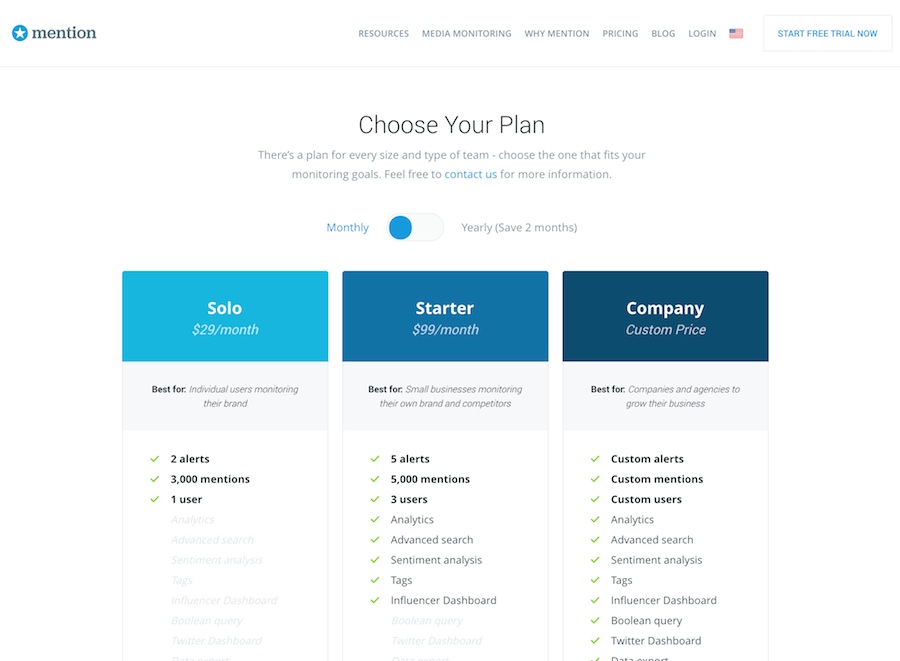 4# Pricing According to Active Users, % of Use or Features
4# Pricing According to Active Users, % of Use or Features
How do you offer real value to your users?
Is it by serving them 1, 5, or 100 user plans? Or by pricing per active user, the real metric that matters both to you and the user?
I know that you know the answers to these questions, but there’s an inner conflict within you – I can sense it from here.
You think that providing a set number of users justifies your package price. We all know that fewer users = less money, right?
Well, it doesn’t work that way. Some customers who don’t use their user quota or % of service (and most don’t), will move to smaller packages and share their user/pass with colleagues. There’s also that chance that they’ll leave your service because they feel like you’re not providing the value they were expecting.
In all these cases, you’ll lose imaginary users and real customers!
Jeff Morris, VP Product Marketing at GoodData decided to free customers from unnecessary user charges, allowing users to scale with the product feature that they need.
What is your pricing strategy today?
We offer a SaaS subscription to our platform. The variables are a platform operation fee that accounts for the number of unique use cases or data products deployed in the platform, and the number of (and features enabled in) analytic “workspaces.” Workspaces are analytic packages that include an agile data model, defined users and roles, analytic data isolated for those users or their organization, and the calculations and visuals for those users.
We have chosen to eliminate common practices of licensing based on number of users, number of servers and amount of data consumed in the platform. Our model focuses on driving widespread and successful adoption of our solution–we grow as our customers grow, without penalizing them for that growth.
Did you ever test other pricing strategies?
Yes, we have tried many other strategies: Charging by user is too restricting for customers, and does not encourage analytic adoption. Charging by data volumes was unpredictable and discouraged expanding analysis, which also stunts adoption.
What made you choose one over the other?
We chose a value-based model that is designed to grow as our customer grows. This model matches our preferred use cases in support of ISVs who embed our product within theirs, and in support of creating Enterprise Analytic Publishing and delivery of data products that allow enterprise organizations to unlock the value of their data by sharing it with customers, partners and subsidiaries. Our model now encourages adoption and usage, and creates predictability within our customers and our own business model.
Did you ever ask your users about the price they would be willing/want to pay for your product?
Yes, we regularly test our price points with customers, especially using our Customer Advisory Board. They resoundingly rejected per-user pricing, which was one of the drivers for us to drop that as a lever.
Paul Campbell, Founder of Tito’s event management software, takes a % out of sold tickets and helps free ticket events to stay free.
What is your pricing strategy today?
We follow the Amazon Web Services model: an on-demand usage fee based on a percentage of the value of each ticket our customers sell. Customers can also opt-in to pay a setup fee or a “reserve” fee to reserve a lower rate for a period of time.
Did you ever test other pricing strategies?
We experimented with fixed rate pricing in the past, but it was hard to strike a balance and ultimately some or other customer would be punished … so a percentage based model just works out the most fair.
We also experimented with _lower_ pricing and we found our prices were too low … we didn’t need to offer such steep discounts.
What made you choose one over the other?
Ultimately we realized we were needlessly leaving money on the table and making building a sustainable business harder on ourselves. We upped the prices and nobody complained (we kept our existing customers on the same rates they had been on)
Did you ever ask your users about the price they would be willing/want to pay for your product?
We often enter into discussions with our customers, and some of our customers prefer to pay less because they don’t feel they would get the full use of all of the features we use. Other customers feel like they are getting far more value than they pay. It depends!
How did you decide the price for your pricing strategy?
Even though we did talk to customers, ultimately, we chose pricing based on the fact that we feel we have a premium product. We wanted our initial offering to reflect our belief that we have a very strong product. We offer the ability to get better rates tied to a commitment, but we chose premium pricing for what we believe is premium service.
#5 Start Up Pricing
I’m sure that this one is going to interest all the SaaS start ups out there.
As a start up, you need to know from where to start? What’s the best pricing to get customers on board when there’s no awareness to your service? Or even worse, when you need to educate the market?
Many start ups offer their product during the beta stage for free, but when you go out of beta, you need to provide a price tag that will:
Keep all the users you’ve gained onboard.
Won’t scare new clients.
There is no one strategy that can tell you what’s right for your start up, finding the right pricing strategy is a journey that begins during your beta when you interview customers and it never ends, you’ll always have to test your pricing strategy!
Sujan Patel, Founder and CEO at ContentMarketer told us an interesting tale about how his company found their current strategy, he also gave us a warning that it might change in a few days ☺
What is your pricing strategy today?
We’re charging $9/month for each of our products: Connector, Notifier & $19/mo for Marketer (our email finder tool). My strategy now is to charege the lowest amount possible to get market penetration. Our products help marketers promote content and since content promotion is something not that widely adopted we’re using the low price to reduce the barrier to entry. We also launched Connector & Notifier products as free tools to gain exposure and test the market. People loved it and begged us for a few more features, so we asked what they’d pay for them, added them and made the products paid at $9/mo.
Did you ever test other pricing strategies?
Yes, we tested many price points and strategies..hopefully our strategy is the same by the time this article goes live ![]() Last March when ContentMarketer.io was in private beta we tested charging $999/year for a managed service + our software & $99 a month. At launch we tested $49/mo but a few months later found out that $9/mo & $19/mo worked best when we got people to sign up by offering a 50% off discount for expired trials. It turns out at $19/mo tell us all the time that our prices are too cheap for the value but at $49 no wants to fork out the cash. Go figure
Last March when ContentMarketer.io was in private beta we tested charging $999/year for a managed service + our software & $99 a month. At launch we tested $49/mo but a few months later found out that $9/mo & $19/mo worked best when we got people to sign up by offering a 50% off discount for expired trials. It turns out at $19/mo tell us all the time that our prices are too cheap for the value but at $49 no wants to fork out the cash. Go figure ![]()
What made you choose one over the other?
Adoption and net growth. Our goal is to build tools to help marketers and we’ve got a few more products up our sleeves, so in order to do that, we need to get the right volume of users.
Did you ever ask your users about the price they would be willing/want to pay for your product?
Yes at every step of the way we asked our users. We surveyed them on our homepage and made pricing only available via email so we can test price points.
6# Comparison Tables
This one is an oldie, but a goldie.
Almost all of the above companies are using it.
I’m sure that you saw pricing pages that have plans organized according to available features, or pages that emphasize features instead of prices, these comparison tables are everywhere and for several good reasons.
It’s the best way to compare plans feature wise.
It’s intuitive and well known, potential clients know for what to look and where.
It’s an excellent way to focus users on value instead of the price!
How does it focus users on value instead of price? Through a cognitive bias called the framing effect.
Remember the above-mentioned pattern recognition capabilities we all have? Well, framing is one of the ways our brain finds patterns in the world around us. This bias focuses the potential customer on contextual focal points that frame the value they receive in a more appealing way.
How is it more appealing?
When you increase the size of the users each plan provides instead of the price size, the framing effect kicks in.
It also happens when you reduce the font size of the price and increase the fort size of all your features.
When you create a list that shows how features influence the user positively (97% SLA instead of 3% Change of failure).
As awesome as the framing effect is, it can’t shield your users from another effect that lurks in shadows of these comparison tables.
Framing works great when there’s a free vs. premium plan, in this way, potential customers can see how a premium plan adds value compared to the free. However, when using the framing effect to compare between several plans, it focuses users on the wrong frame, the negative one.
Why? Because when people are asked to compare they mistrust almost automatically, focusing them on problems that might pop rather than the value gained from each package. Comparison activates conscious decision making and negates the effects the framing effect.
#7 Annual Plans
As with the comparison tables, almost all of the above companies use this strategy.
You know that your potential customers are looking for a deal, even if your product is a great fit your customers would love to get some discount on it. But giving them an automatic discount can cause a lot of problems in terms of brand image and perceived value.
That’s why you need to give a discount that will feel like a win-win situation, purchasing an annual plan with a two-month discount fits the bill. There are so many benefits to both you and your customers in an annual plan that you just can’t afford not to offer them!
It secures a customer for a year (or 14 months if the extra two months are framed as a 12+2 months bonus).
It shows customers that there’s a serious company that can provide support and value for more than a year, and that has done so before (The inner dialog explains that to the customer: “Hey, I’m sure they have a lot of customers if they offer an annual plan.”)
And of course – with annual commitments, churn goes down! (but it doesn’t mean that you need to stop your investment in retention, au contraire).
Summary
Finding the right pricing strategy for your SaaS product is not so simple as many startups think, so you need to work hard until you find the right strategy that suit your product, your audience and your market.
Which SaaS pricing strategy did you like? Have you any personal favorites to add? Please share in the comments below!
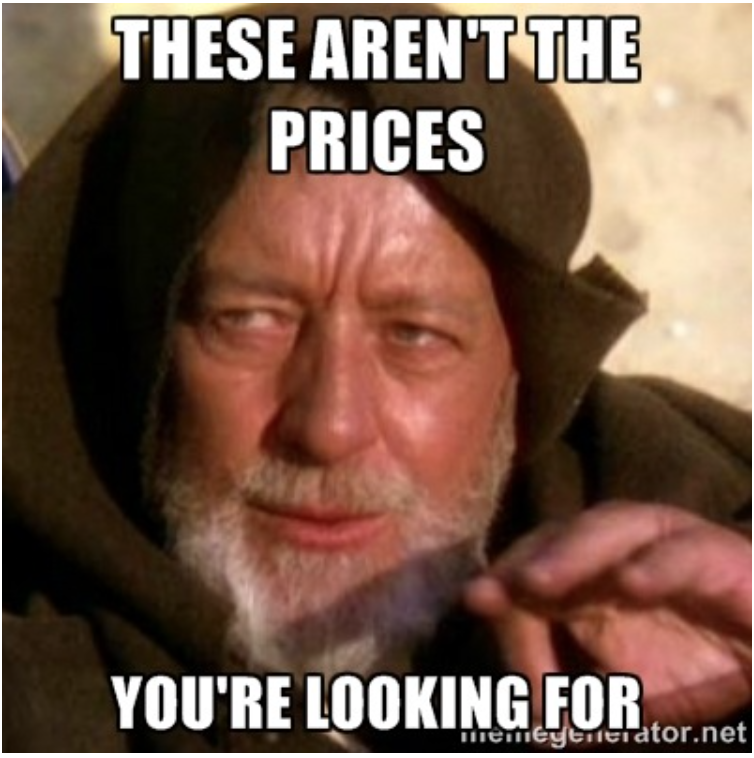


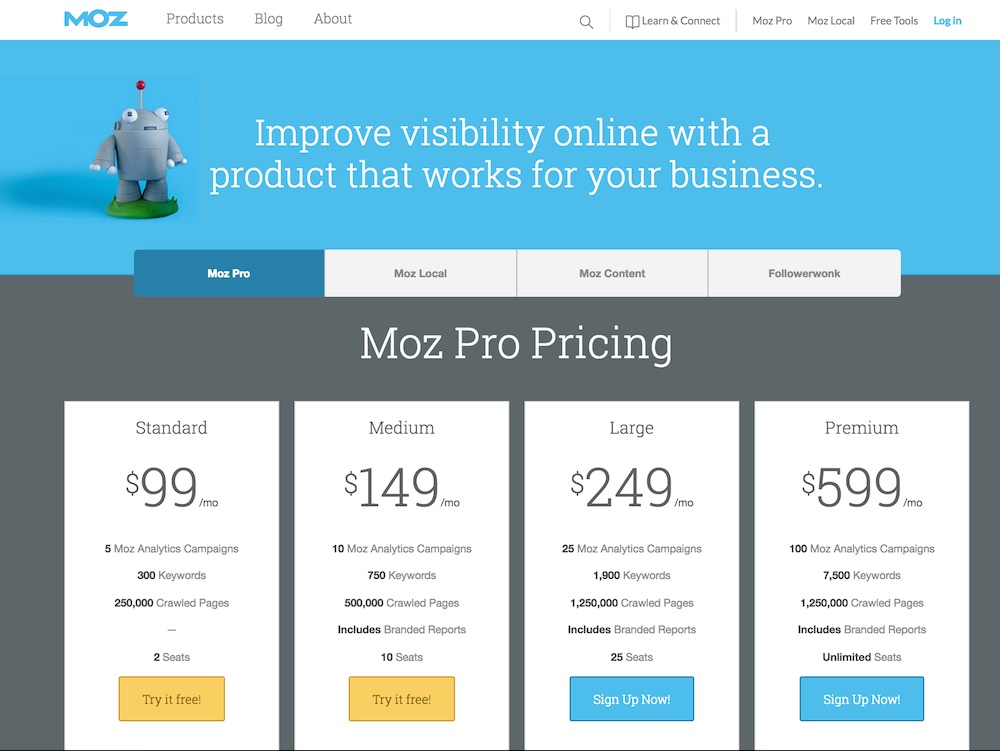

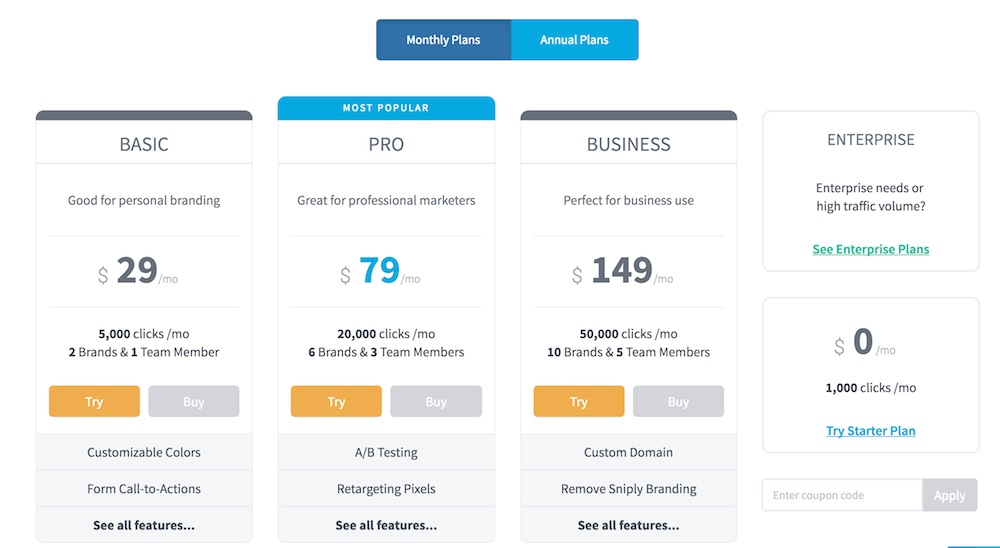

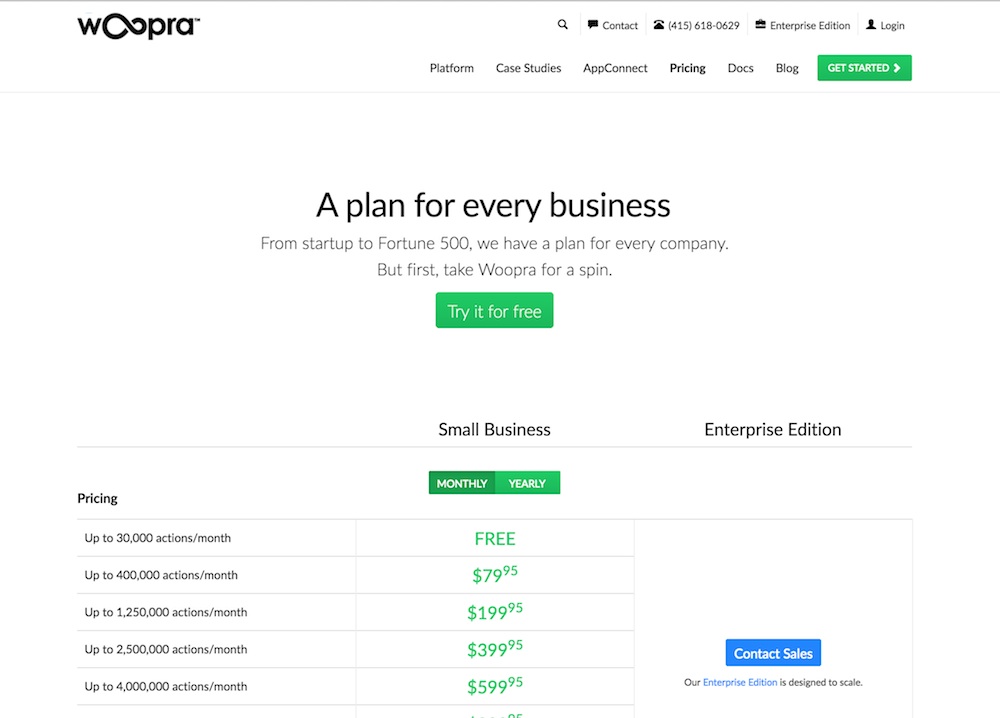

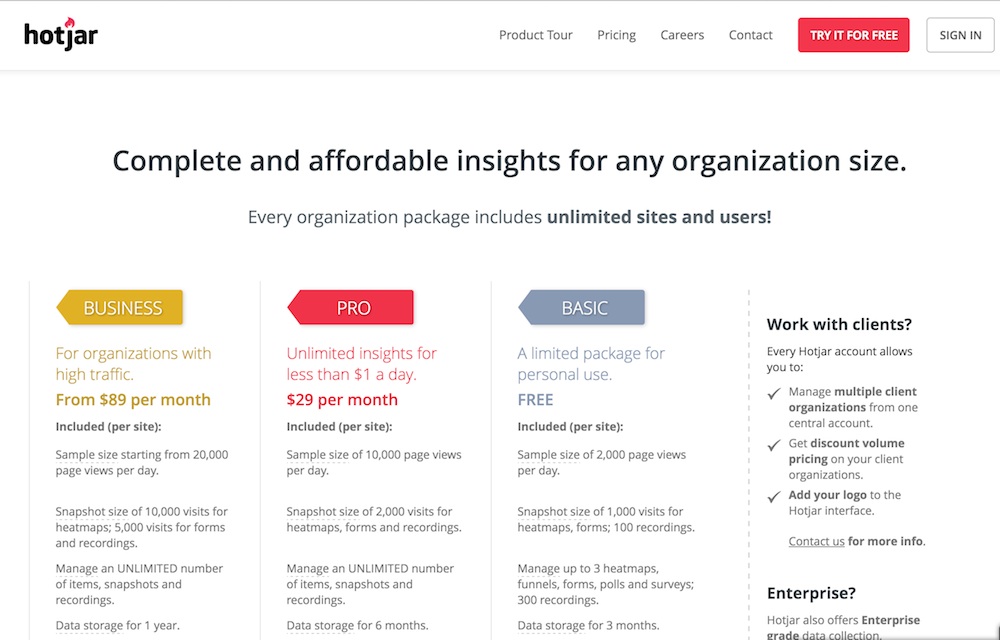




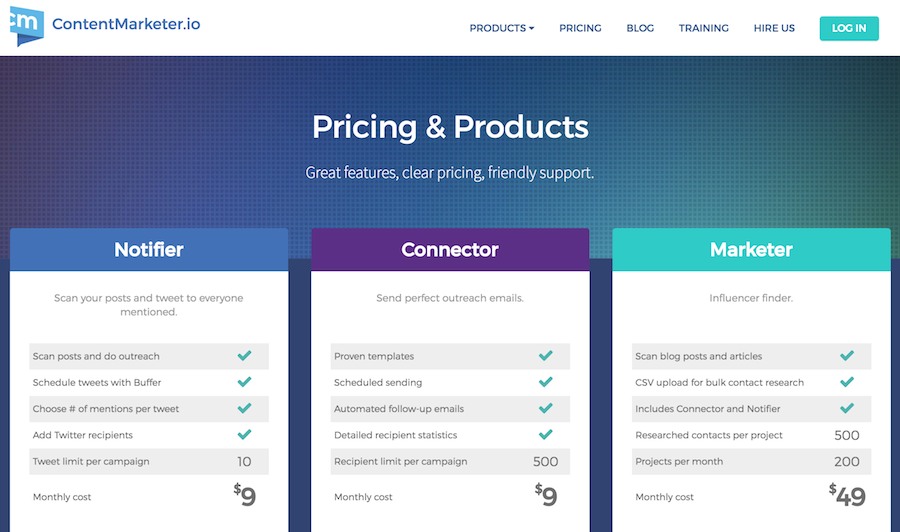
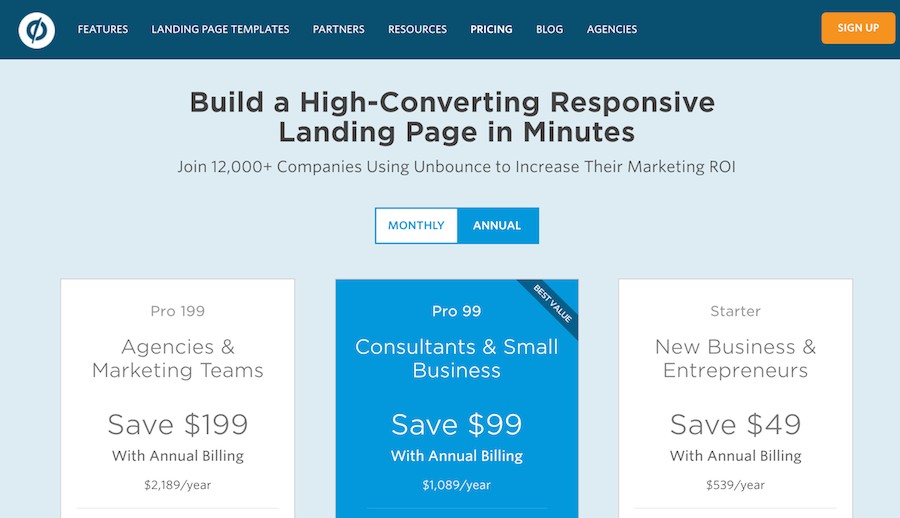


Pingback: The Beginner's Guide to SaaS Conversion Optimization()